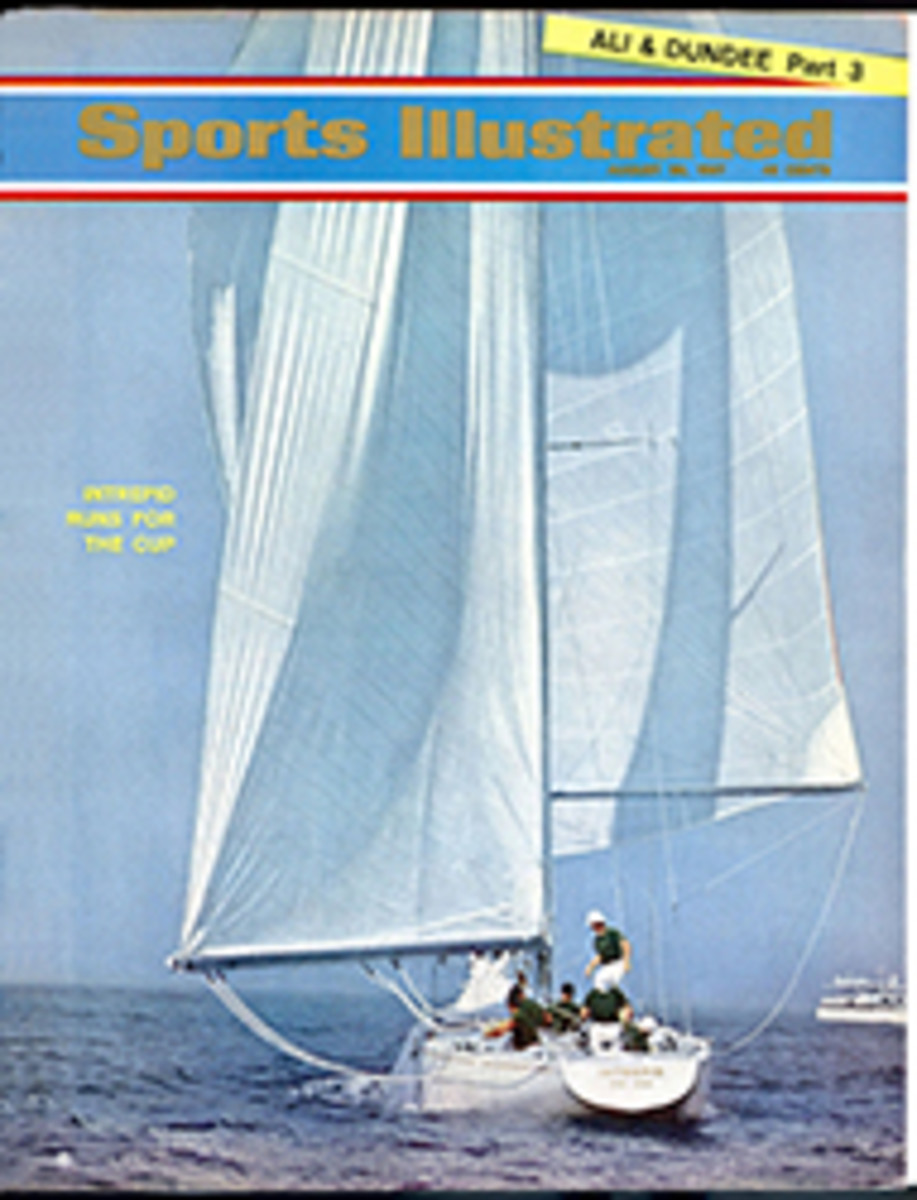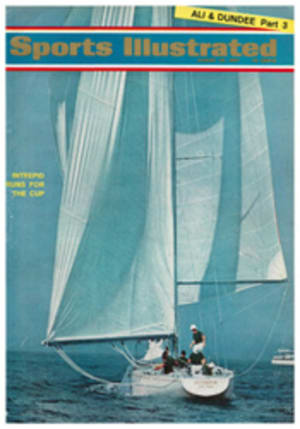
A Proud Horseman Is Drawn and Quartered
If the late C. S. Howard had been born into money and a membership in the Jockey Club, all this might never have happened. Such a proud, confident man might simply have laughed in the cowboys' faces and thus might not have had his wallet picked in front of 10,000 people.
But the knowledge that he had earned his silks the hard way had always prompted C.S. to regard a challenge not as a sporting proposition but as an out-and-out declaration of war—and Howard never backed away from a good fight.
They knew this, of course, in the business world. Howard had started from nothing and had built himself an empire of automobile distributorships on the West Coast. The smell of gasoline and the purr of the luxury-car engines made him a fortune, but deep down inside what C. S. Howard really cared about was horses.
Howard got his start as a horseman in the 1930s when he spent $7,500 to acquire a workaday horse that was being used mostly in minor stakes races, leaving bigger events to his more affluent stablemates at the Wheatley Stable. The horse, a bay colt by Hard Tack out of Swing On, was named Seabiscuit.
Howard ran him everywhere he could. He ran him in so many places that rail-birds nicknamed the horse "Marco Polo." When the Biscuit finished his racing career at the age of 7, Howard had banked over $400,000. More important to Howard, who was fiercely loyal to his four-legged mint, Seabiscuit had gone east to Pimlico and there, in November of 1938, he had beaten heavily favored War Admiral by four lengths in a match race that gripped the entire country's imagination.
Seabiscuit was the rock upon which Howard's racing stable was founded. The Howard ranch in Mendocino County became a showplace. Into this world in 1947, Howard brought an English sprinter named Fair Truckle, a beautiful animal that ran short distances at blinding speeds, setting Howard up for a comedown at the hands of as cool a gang of operators as ever hustled a bet. Their legs were bowed, their cheeks were tanned and they had spurs that jingle jangle jingled. They also had a sinfully ugly bag of greased horseflesh named Barbra B. They ran her at county fairs and dirt tracks and the so-called bullring tracks where Thoroughbreds and quarter horses were often thrown into the same races.
Barbra B was a quarter horse. The cow people will tell you that a quarter horse can beat anything this side of Cape Kennedy at a quarter of a mile. This may be overstating the case but it is true that quarter horses are bred for this distance, that they accelerate with the quickness of an irritated cobra and that nonquarter horses that race them under their ground rules are generally owned by people who do not like money. And it is true that quarter horses have run 400 yards in something under 20 seconds.
It is also true that one day Barbra B had beaten a Thoroughbred to a positive frazzle, and somehow the cowboys learned that this same Thoroughbred had done rather well with Fair Truckle. Armed with this knowledge, the Arizona Mafia descended upon Box 47 at Hollywood Park where C. S. Howard was soaking up the sun. They stood there and they began to talk about the fact that Sea-biscuit had to be one of history's most overrated horses. C. S. Howard began a slow burn. Then they called Fair Truckle a plow horse, and C. S. turned medium rare. By the time an alert usher had offered to evict the hecklers, C. S. was positively charcoal gray. Then they dangled the bait.
"How much?" he snapped in uncontrolled anger. "Put up or shut up."
"Waal," a cowpoke drawled thoughtfully, "I reckon we could raise 50."
"Fifty what?" C. S. snorted.
"Why $50,000," the man in the Stetson said, and suddenly it was no longer a game.
If C. S. Howard was intensely loyal to his animals, he was also loyal to his wallet. He set the ground rules. Barbra B and Fair Truckle would race 400 yards. There would be a stationary starting gate. There would be stewards and a film patrol, and he would be able to use his regular rider, Johnny Longden. The cowboys agreed. Quarter horses had been running that distance here since the first Spanish settlers had reached Florida. Quarter horses could beat Parnelli Jones's turbine at that distance. And, just so it shouldn't be a total loss, the cowboys had a few hole cards of their own.
The site would be Hollywood Park. Howard, who had a little something to say about what went on at the track in those days, went to the management that afternoon and arranged for its exclusive use the morning after the current meeting had closed. Under no circumstances was the public to be invited. Jimmy Stewart, who is now vice-president of the track, was delegated to supervise the affair.
"The first thing that happened," Stewart recalls, "is that we all went out to see Barbra B work one morning, and right away we knew that Mr. Howard was in a lot of trouble. The second thing was that the press found out about the bet, ran stories on it, and suddenly it seemed like we had half of California in on the thing.
"I had a money truck parked in the infield with the stakes, but it got to be more complicated than that. Those big old cowboys began walking through the stands taking man-to-man bets, and I couldn't begin to guess how much money changed hands that morning. There is, however, one thing I can tell you for sure. I looked out at those cowboys, and I looked at the hustlers they were betting against, and I looked at C. S. Howard, and I remember very well that I said to myself:
" 'Lord, I am a young man. I would like nothing better than to be able to live to be an old one. Please, Lord, do what you want but don't give us a photo finish today.' "
The cowboys themselves had taken a few steps to guard against this possibility. The first was the placing of the starting gate smack on the starting line instead of a few jumps behind it. This took away any breathing room Fair Truckle might have and made it a scrupulously standing start, designed to favor the blinding acceleration that is a quarter horse's stock in trade.
The second became apparent to Stewart and people who worked for the track when the jockeys appeared. Longden, tough, able and racetrack-wise, climbed aboard Fair Truckle wearing the Howard stable's silks. Barbra B, recalled by Stewart as a kind of "stringy-looking animal," showed up with a jockey who had been barred from most American tracks and who rode mainly in Mexico and in the "outlaw" racing plants. And here we come to an area that C. S. Howard had not even considered. He had set the rules, but he had forgotten the matter of spurs. Barbra B's jockey was wearing the longest, sharpest set of spurs Jim Stewart had ever seen. They looked like knitting needles. The ground rules were consulted. Nothing about spurs. C. S. Howard had no comeback.
So they came out onto the track where the Hollywood Park starter got them into the gate. The crowd fell silent. Suddenly, the starter turned them loose. Incredibly, Fair Truckle seemed to break on top. Then the hero of the Arizona Mafia jabbed those two syringes on his heels into Barbra B's flanks and—forget it, C. S. Howard.
"Barbra B ran her into the ground," Jim Stewart remembers. "She won it by two lengths. The photo camera was never a factor. We paid off at the money truck, the crowd paid off in its seats and nobody was killed.
"It was a very nice race—for everyone except Mr. Howard."
And, presumably, Barbra B.

